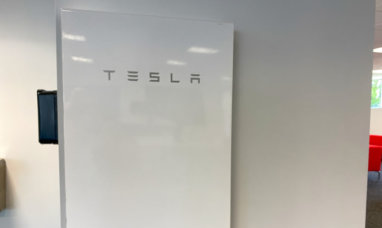Vale S.A. (NYSE:VALE) is a worldwide metals and mining company that produces iron ore, nickel, copper, platinum group metals (PGMs), gold, silver, and cobalt. In Brazil and other countries, the firm maintains major logistics infrastructure such as railroads, maritime terminals, and ports. In 2022, iron ore production and related services accounted for roughly 79% of Vale’s net operating income. The balance comes from its energy transition metals division. In this analysis, I also look at Vale’s financials and the market prospects for its output. Vale stock has dipped by 15% year-to-date.
Vale’s Business and Financial Prospects
The company expressed confidence in the success of its S11D mine in Minas Gerais during their 2023 Global Metals, Mining, and Steel conference. The S11D mine contributed significantly to a 6% rise in iron ore production over the previous year. Furthermore, Vale’s pallet manufacturing increased by 20% year on year during the first quarter of 2023. This expansion can be ascribed to increased pellet feed availability and decreased maintenance activities. As a result, Vale’s expanding iron ore production illustrates the company’s ability to fulfill rising worldwide demand for this resource. However, it is worth mentioning that iron ore fines and pellets sales fell 7% as a result of rainy season loading constraints in the Northern System. Despite this setback, management stated that it will be mitigated during the second half of 2023. The recently secured operating license for the Torto dam will be the primary driver of this compensation. The commissioning of the Gelado dam is another project that will contribute to an increase in pellet feed output. Furthermore, in terms of energy transition metals, the company’s copper production has increased by 18% year on year compared to the same quarter in 2022. This expansion can be ascribed to Salobo’s successful launch, which resulted in a 25% increase in sales. Furthermore, Vale has produced the most nickel in the last five years in a row. Vale has also signed a deal with global carmaker Ford Motor Company (NYSE:F) for the Pomalaa HPAL project, which aims to promote more sustainable nickel production in Indonesia. Overall, Vale’s involvement in diverse production strategies has differentiated their assets and enhanced their supply chain.
Vale had an exceptional operating cash flow of nearly $3.7 billion in the first quarter, a considerable rise from the $1.8 billion recorded at the end of 2022. This was bolstered by $1.15 billion in capital expenditures, resulting in a sizable free cash flow of more than $2.5 billion. This solid financial performance has prepared the way for the company’s dividends. It is worth noting that this strong free cash flow has dramatically increased VALE’s EBITDA to cash-conversion ratio, which now stands at 62% year over year, up from 19% in 1Q 2022. This improvement can be attributable to the large amount of cash generated by sales by the end of 2022. As a result of this strong financial performance, management paid out $1.8 billion in dividends at the end of the first quarter of 2023. Furthermore, they successfully completed 47% of their third buyback program, which began in 2020.
Prospects for Nickel and Copper
VALE’s nickel production is likely to increase significantly in the future years. The company expects nickel production to reach 230-245 ktpa in the medium term, rising to 300 ktpa by 2030. Global nickel mine output is expected to expand at an average annual rate of 5.1% until 2026, after which it is likely to fall to an average annual rate of 1.9% by 2031. Global annual nickel output is expected to reach 3.15 million tonnes ((mnt)), a 40% increase from the 2.24 million tonnes produced in 2021. It is vital to emphasize that Russian nickel is unaffected by the sanctions imposed as a result of the Russia-Ukraine conflict, which has generated uncertainty in supply chains, notably for high-grade nickel utilized in the electric vehicle (EV) industry as battery-grade material. Overall, Russia accounts for 21% of global battery-grade nickel production, with Canada, Australia, and China accounting for 17%, 14%, and 10%, respectively. Nickel ore production will increase significantly by the end of 2031, mostly due to Indonesia and the Philippines. These countries are concentrating on improving their downstream industries in order to boost nickel mining, and thankfully, VALE has operations in Indonesia. Furthermore, nickel consumption is expected to increase by 40% by 2030 due to its use in batteries for electric cars. As a result of the significant rise in the energy transition, the predicted demand for nickel is estimated to reach 6.2 million tons.
Furthermore, global demand for copper, a critical component in vehicle batteries and renewable energy systems, is expected to rise by 20% to 37 million tons by 2030. The International Energy Agency (IEA) forecasts a considerable increase in mineral demand for sustainable energy technologies by 2050. An electric automobile, for example, takes six times the mineral inputs of a normal car, whereas an onshore wind facility requires nine times the minerals of a gas-fired plant. Minerals account for around 200 kg of an electric automobile, with copper accounting for approximately 53 kg directly. Copper accounts for more than one-third of an offshore wind farm.
Vale Stock Valuation Indicators in Comparison to Rio Tinto
Rio Tinto (NYSE:RIO) is a major participant in the metals and mining business. One of their primary goals is to use technology to reduce their carbon footprint during production. Rio Tinto has established itself as a successful mining corporation thanks to its strong balance sheet and diverse holdings. Furthermore, the company has good leverage and liquidity positions, which bodes well for its future market conditions. As a result, I compared VALE’s financial metrics to those of RIO, one of its primary competitors. When major valuation indicators such as VALE’s PE ratio and EV-to-EBITDA metrics are compared, it is clear that VALE’s EV-to-EBITDA is 3.55x, which is 16% lower than RIO’s 4.26x. Furthermore, VALE’s PE ratio of 3.79x is significantly lower than RIO’s PE ratio of 8.37x. These valuation criteria lead to an appealing entry point for VALE investing, as it appears to be undervalued in the market. Furthermore, given VALE’s effective business and operational strategies, as well as its sound financials, investment in this minerals and mining firm is anticipated to generate attractive returns.
Conclusion
Vale S.A. has strong financials that are supported by exceptional valuation measures, indicating that the firm is now undervalued in the market. Furthermore, Vale’s management has made aggressive initiatives to improve production volumes through efficient projects, recognizing the global surge in demand for nickel and copper metals. Given these considerations, it is clear that investing in Vale stock would be a wise move in the mineral industry.
Featured Image: Megapixl38 © Buranatrakul

















